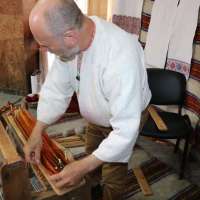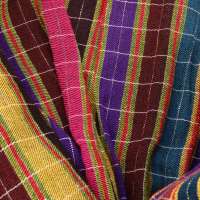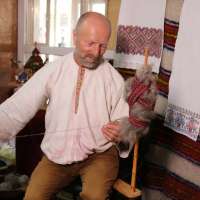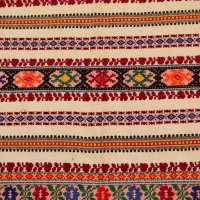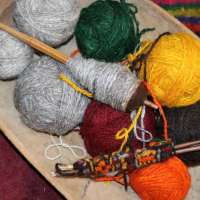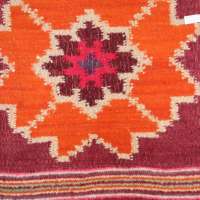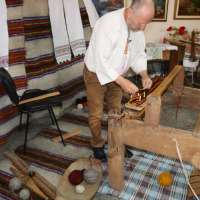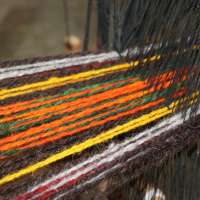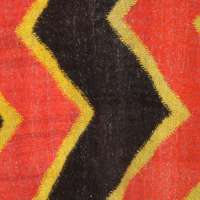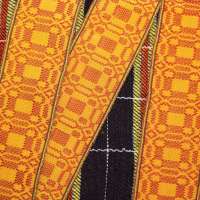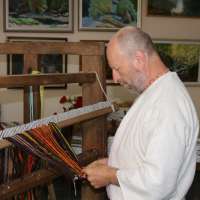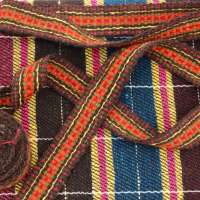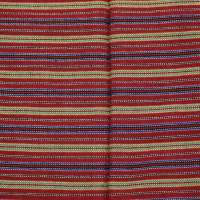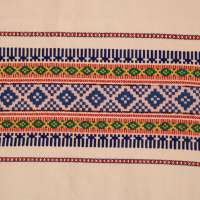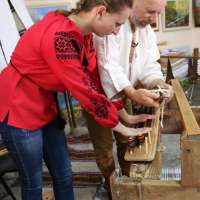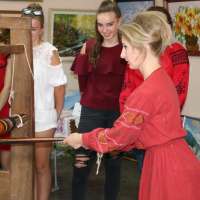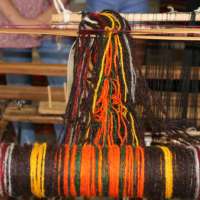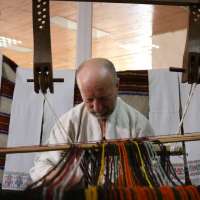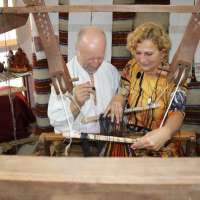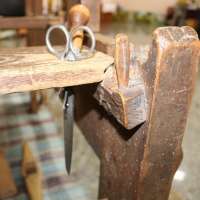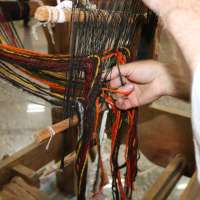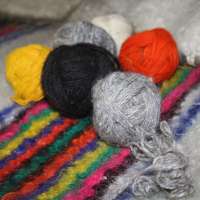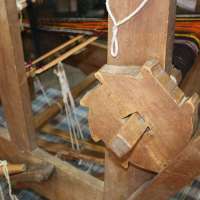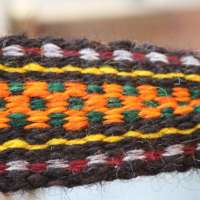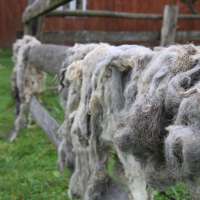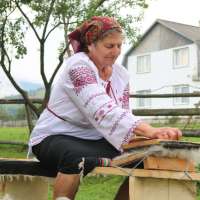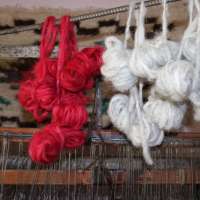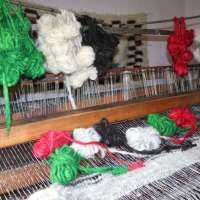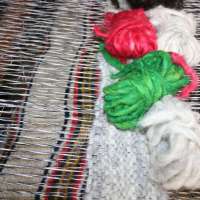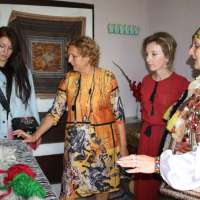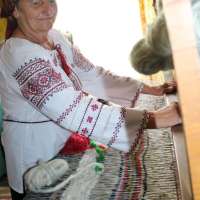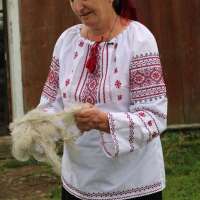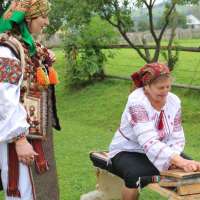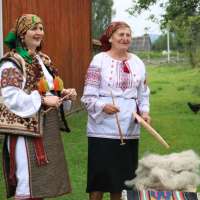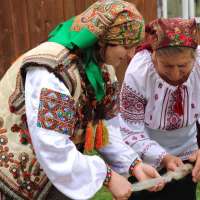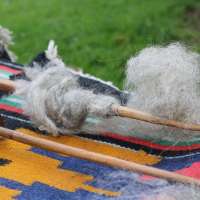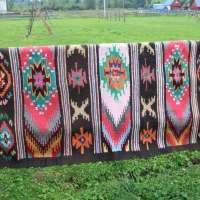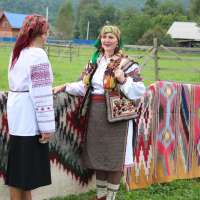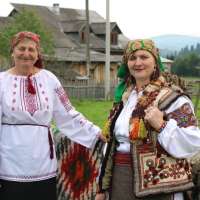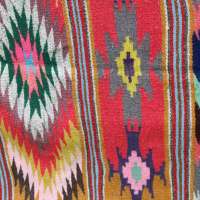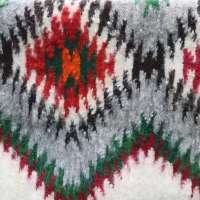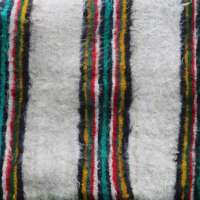- Home
- Elements ICH
- Hutsulska bryndza
- Wool weaving in Hutsulschyna
- Iza wickerwork
- Lysychovo blacksmith tradition
- Weaving tradition
- Hunia of Richka
- Аrtistic Weaving
- Folk music tradition
- Boronyavo Sharkhan
- Betlehem in Choma
- Measure in Yasinia
- Mayalish in Storozhnytsia
- Petrivska Subitka
- Kolochavska Riplyanka
- Slyvovytsia of Novoselytsia
- Bychkiv Honey Cake
- Transcarpathian Bograch
- Plum Lekvar (jam)
- Transcarpathian Shovdar
- Online Lectures
- Master Classes
- Methodical Recommendations
- Catalogs
Communal Institution «Regional Organizational and Methodical Center of Culture» of Zakarpattia Oblast Council
Well-known master Mykola Kokish tells that he likes working on a loom at dawn, when outdoors is only starting to light up and the first rays of sun just appear. Work brings him peace and tranquility, gives pleasure. It is a kind of meditation, during which the solutions of many life problems involuntarily appear in worker’s mind.
The man says that lizhnyk starts … from grass growing in the mountain valley. The quality of the wool, and therefore of the product, depends on what the sheep will eat. The production process starts from shearing, usually in early April. The wool is being washed, what is important – without any chemicals, and after that dried. After that the wool is scratched, combed, painted and sorted by color, and then the thread of different thickness is being weaved – half-millimeter, millimeter and twomillimeter – depends on kind of product. For example in production of lizhnyk the thickest thread is used.
There are more than twenty masters of wool weaving in Rakhiv Region. As virtuosos of this craft are known Mykola Kokish (village Roztoky), Dosya Grynazhuk and Vasylyna Temitska (village Cherna Tysa), Gafia Vorokhta (village Bogdan) and others.
In order to preserve and promote the tradition of wool weaving in the village of Kvasy in Rakhiv district, a festival-fair “Colours of Carpathian Lizhnyk” was founded. The event is not only entertaining, but also educational and ethnographic – in its program, besides the fair and mass festivities, the weaving master classes have already become traditional.
The project was implemented with the support of the Ukrainian Cultural Foundation
Online HUB ICH of Transcarpathia , 2019
ool weaving is considered to be the one of the oldest branches in folk consumer crafts art. Same as embroidery, it is very popular craft in Transcarpathia. Every region has its own special ornaments and colors – they help to determine precisely the identity of ethnos. Traditions of weaving are passed and multiplied from generation to generation.
Long ago Roztoky village in Rakhiv region was praised by folk craftsmen in their works. Here we can find the great spread of Easter eggs making craft, embroidery, woodcarving. The special skills of local people are witnessed by products of sheep wool – carpets, verets, zapaskas, tablecloths, obruses, towels, belts etc.
However in everyday life of Roztoky dwellers the prominent place is taken by lizhnykarstvo. Lizhnyk – is a unique authentic product of Hutsuls in Ukrainian Carpathians. It makes people warm for centuries. Hutsulschyna has its inherent traditional patterns, that differ and impress not only with their colorfulness, but also with extremely poetic names, for example “syvi ochi po obochi, kvity vseredyni” (gray eyes on the sides, flowers inside), “moyi pcholy dobre royat ta shche nosy medu” (my bees swarm well and also make honey), “uh ya mayu syvi voly” (and I have gray oxen).
From ancient times, in late autumn or winter, when household chores were over, there came the time for wool weaving. Krosna (weaving machine) were set out in the middle of the room, workers sat on the bench and the magical act began…

Roztoky is a village in Rakhiv district
Population: 2800 inhabitants
Coordinates: 48° 04′ 13″ N, 2 ° 18′ 26″ E
Distances: Kyiv – 700 km • Uzhhorod – 200 km • Khust – 60 km • Rakhiv – 6 km
The first written mention: 1651
